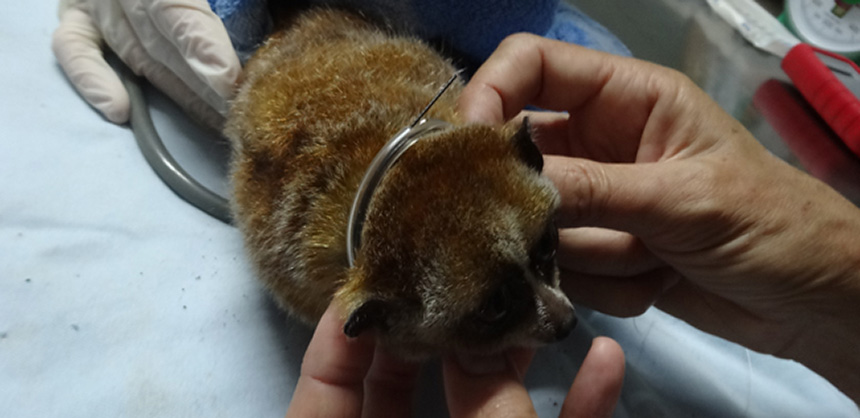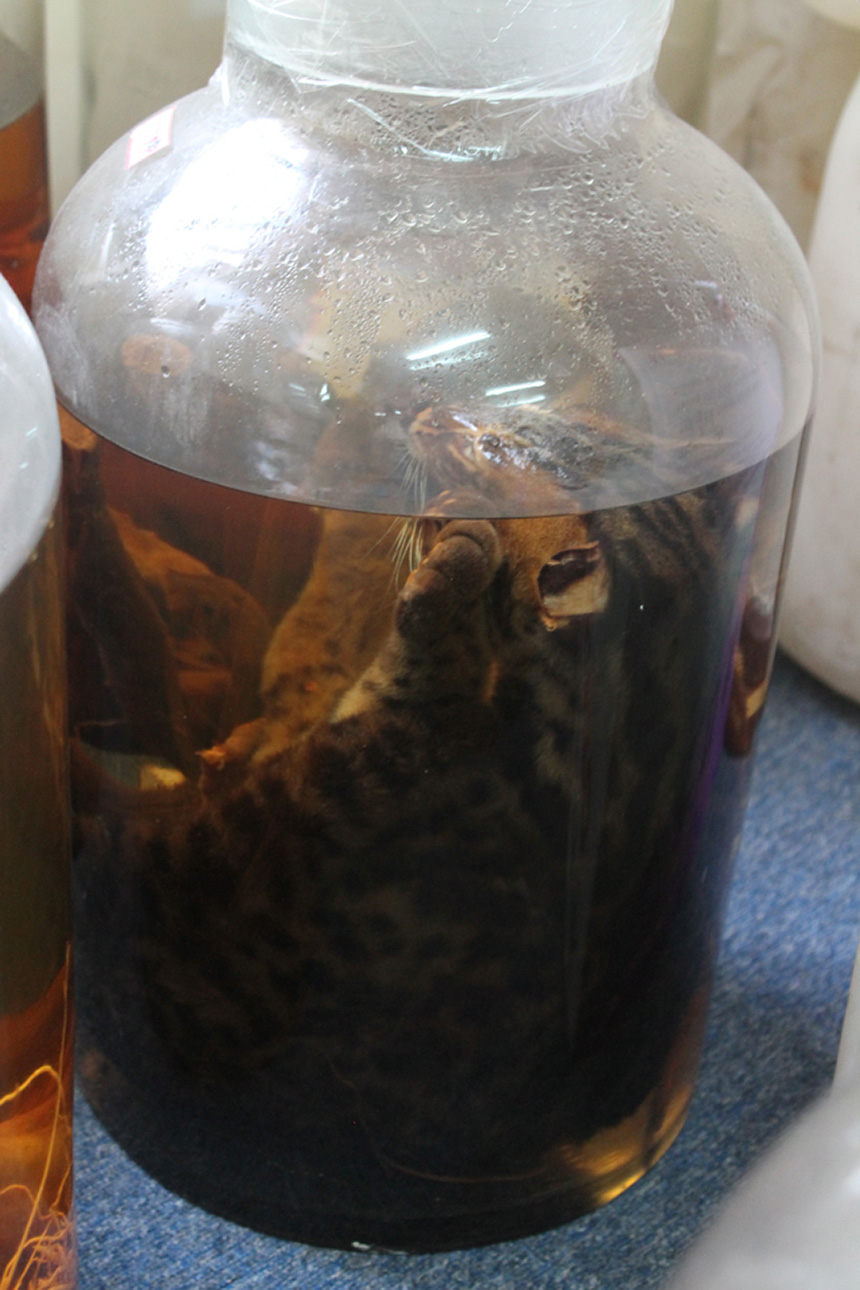Kinetic Six and FLIR loan camera to EAST.
EAST can now monitor pygmy loris better in the dark, using a thermal imaging camera.
The camera has been loaned by technological specialists in thermal imaging equipment Kinetic Six and FLIR. Several pairs of pygmy loris, which are nocturnal, have been released by EAST back into the wild. They are tracked for their first few months using radio collars.
But often, even when the radio signal is strong and you know you are only metres away, unless they look at you and their eyes shine, you cannot see them. Now the thermal imaging camera has changed that, allowing the tracking team to monitor the pygmy loris for 12 hours throughout the night.
The result is more valuable data on how well reintroduced pygmy loris are succeeding. And it shows that our pygmy loris most recently released, Rebecca and Dan are doing well.

Dan and Rebecca
Dan was rescued by EAST in August 2015… and had a lucky escape. We picked him up from a house in Ho Chi Minh City where traditional medicine with ingredients made from many different endangered wildlife – from bear paws and cobras to leopard cats – were found in bottles of rice wine.

His future looked bleak. Instead, he came to Dao Tien, passed the health checks and was paired with Rebecca, a young female not long rescued from the forest.

They were returned to the wild in December 2015. Although released as a pair, Rebecca and Dan do not stay together but meet up every now and again. Interestingly, they have been found travelling happily from one metre above ground to 20 metres high. Their radio collars have a battery life of six months but we plan to replace the collars before then in order to track them for a year… with the aid of the camera.
(For more updates, follow Endangered Asian Species Trust on Facebook.)
Monitoring pygmy loris at the rescue centre
Even at the rescue centre the thermal imaging camera is an enormous help when introducing pygmy loris to each other and when monitoring newly-rescued individuals.
Pygmy loris have a venomous bite and it can be can be difficult to find a companion they get on with. We need to ensure there’s no fighting. Normally, during introductions, we use red lights but these only allow you to view one individual at a time and you are unaware of what the other is up to. Now with the thermal imaging camera we can see a large area clearly.
